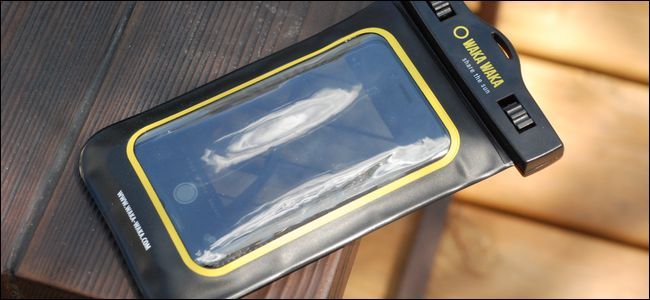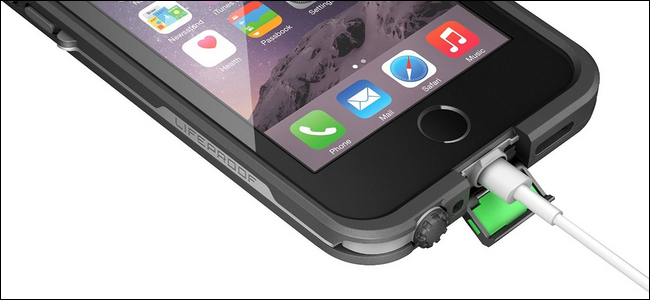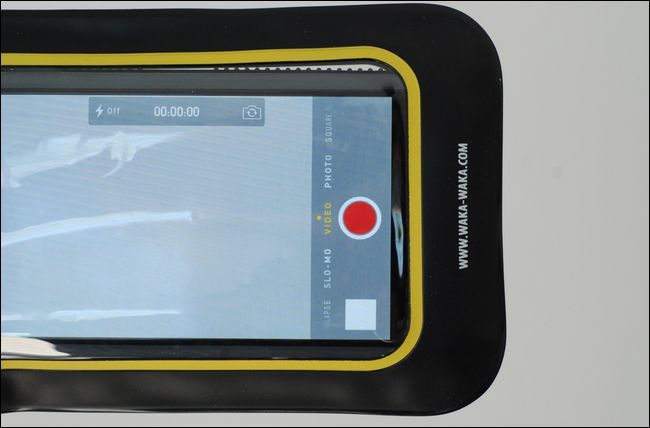As smartphones become increasingly indispensable fixtures in our lives it's only natural to both want to take them where water is present and protect them from that water at the same time. Read on as we show you how to properly protect your phone from the hazards of a day at the beach.
Dear How-To Geek,
Summer is rapidly approaching and that means trips to the beach, poolside lounging, fishing with my family, and all sorts of activities that bring me in close proximity with (or in) water. While I'm excited for the advent of summer I'm also not so excited about the proposition of potentially dropping my brand new iPhone 6 into the pool.
What are your recommendations for waterproofing a smartphone? I'd like to keep it economical but I'm also not willing to cheap out and waterlog my phone in the process.
Sincerely,
Water Worried
The world is a scary and wet place as far as smartphones (and all our other personal electronics) are concerned; you're more than justified in wanting to protect your phone especially in light of how many water-related activities you have lined up this summer.
There are two principal approaches you can take to increase your phone's water resistance: custom model-specific cases and general-use dry bags. Note we said increase water resistance and not make waterproof. There's really no such thing as waterproof when it comes to protecting your personal electronics. Every method of protecting a device from water will, if dunked into water deep and/or hard enough, eventually fail. The goal is to protect your phone in a fashion that suits the conditions: there's a big difference between protecting your iPhone from splashes at the poolside bar than protecting it while scuba diving.
Let's take a look at the two approaches including the benefits and downfalls of each.
Water Resistant Cases
For the majority of popular phones on the market such as the iPhones, the Samsung Galaxy line, etc. it is possible to purchase a ruggedized water resistant case intended for full time use on the phone.
These cases are ideal if you wish to have continuous protection for you phone and you want to use your phone in the wet environment (the beach, on your boat, etc.) with the same ease with which you would use the device in a regular phone case.
Expect to pay around $70-100 for a proper water-resistant phone case with good seals, a touch-friendly front panel, and proper protection certification. The nomenclature used to describe water-resistance is know as the Ingress Protection rating (or IP rating) and is specified with two numbers in the format IPXY where X is the degree to which the case is resistant to physical ingress (the intrusion of solid objects like wires, grains of sand, etc.) and Y is the degree of resistance to liquid ingress. When shopping for a case you want to see at least an IP68 rating which means the case will keep dust/sand out and is water resistant to a depth of six feet for at least an hour.
A good example of this caliber of case is the LifeProof line of iPhone water-resistant cases. They run $70, they offer an IP68 rating (as well as shock resistance per MIL-SPEC standards for drops up to 6.6FT). As far as water-resistant cases go they're highly rated and best selling for a reason.
Now, there is one downside to water-resistant cases that (if handled poorly) renders them as worthless as a regular case when it comes to water protection: the access ports. Because the case is intended for use as a permanent addition to your phone this means it must have access ports for the headphone jack and the charging port. This also means that if the ports are not securely and properly closed per the manufacturer's specifications that the water-resistance becomes significantly lower or outright nonexistent. (See the image above where the charging port is open on the LifeProof iPhone 6 case as an example of how the case in its unsecured state would have a point of water ingress.)
That's not really the fault of the manufacturer; however, that's a flaw in the design that cannot be avoided if the design allows for the user to access critical parts of the phone without totally stripping the case off.
In summary: expect to pay at least $70 for a good water-resistant case, purchase one that has an IP rating of at least IP68, and make sure you have properly sealed the cases ports per the manufacturer's specifications any time you're around water.
Temporary Protection with a Dry Bag
If you're not interested in investing in (or don't like the bulk of) a full on water-resistant case then there's always dry bags. A dry bag is simply a heavy duty plastic bag that is designed to seal out moisture. They've been around for years to keep whole bags worth of gear dry on rafting expeditions and the like, but in the digital age you can find little dry bags designed just for phones, cameras, and other small electronics.
The biggest benefit to using a dry bag is the price. You can get a rock solid smartphone-sized dry bag for around $10; heck, you can even get one for your iPad or your Kindle for around $10 too. It's, by far, the most economical (yet very effective) way to approach protecting your device from water. Good dry bags even come with IP ratings just like water-resistant cases. We're using a dry bag we picked up with our Waka Waka solar charger but if we weren't then we'd snap up this $9 Joto Universal Bag. Although not all dry bag companies list IP ratings many do (and you should look for them); typically you'll see an IP rating in the form of IPX8 where there is no value for the physical ingress protection (as it isn't really applicable to a solid and completely sealed plastic bag with no port covers).
What's the catch? The catch is that your device is not in a perfectly molded case with water-resistant buttons and the like; it's in a super thick ziploc-style bag. While we've had no problem accessing our iPhone while it was in a dry bag (we can still press the power button, touch the screen, use the camera and so on) it is definitely less convenient than having a full-time water-resistant case wrapped around the phone.
That said, dry bags are a very alluring solution. They're cheap. You can still use the phone inside the dry bag (albeit with less clarity than if it was in a custom case with a hard screen overlay). You don't need to worry about leaky ports because the entire device is uniformly sealed inside the bag (which features a big heavy clamp mechanism at the top that seals things up tight and provides a clear indicator of that state).
When we were shopping around for a solution for our own smartphone-water concerns we opted to go with a dry bag because it was the right balance between cost and use (given that we don't routinely have our phone in an environment where it will be exposed to significant amounts of water it was a reasonable tradeoff to shove it in the dry bag when we're at the beach).
In summary: Dry bags are much cheaper (never pay more than $8-12 for one), offer more fool-proof protection on account of their one-stop sealing/locking mechanism, and offer even better ingress protection than a hard case (no matter how teeny-tiny that screen-scratching piece of sand might be it's not passing through a heavy duty plastic barrier); the tradeoff is that your phone is in a clunky plastic bag and the buttons are more difficult to access.
Armed with a little knowledge about the subject you're ready to pick the water protection method best suited for your needs and environment you're using the device in.



